Is that a motorcycle, a scooter or a motoscoot?
So what’s with all these little Honda Waves and their copycat cousins that I see everywhere I go throughout Asia? They are more than a scooter but less than a motorcycle. Even I get get confused so I have interchanged the two terms throughout this article. Whatever you decide to call them, they have taken over Asia. In North America, the big biker crowd would laugh them off the street. In the US and Canada, a 1000cc motorcycle is now considered a mid-sized machine. Here the two-wheel culture is a 180-degree turn from any paradigm I knew before I moved here. You would be hard-pressed to see a bike over 500cc during your daily walkabouts on the backstreets of Chiangmai. Travel to any country in Asia, and the Honda Wave,the Honda Dream and all their knock-offs, dominate the streets. Whether you are in Thailand, Bali, or China, these things are everywhere. You’ll find them parked at the mall by the hundreds, lined up at every intersection at the front of all the other traffic, and taking over any space through which you want to walk.
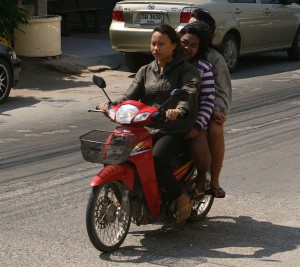 Here it’s cool to own a scooter. In one foul swoop, it replaces the pick-up truck, the family car and anything else that has wheels. Moms and dads haul their own kids back and forth to school, sometimes along with a couple of others as well. Throughout the day, they are used to deliver stacks of goods from warehouses to shops. For god’s sake, I have even seen fridges, stoves and bookshelves hanging off these two-wheeled workhorses as they zip around the various cities. Somehow, I don’t think this would pass the driving regulations of the western world!
Here it’s cool to own a scooter. In one foul swoop, it replaces the pick-up truck, the family car and anything else that has wheels. Moms and dads haul their own kids back and forth to school, sometimes along with a couple of others as well. Throughout the day, they are used to deliver stacks of goods from warehouses to shops. For god’s sake, I have even seen fridges, stoves and bookshelves hanging off these two-wheeled workhorses as they zip around the various cities. Somehow, I don’t think this would pass the driving regulations of the western world!
I started thinking about why they are so prolific throughout Asia as I was walking home today from Tesco, a ten minute jaunt from our house. As I passed and was passed by a few dozen multi-colored Waves and their numerous wannabes, I wondered how many of these things were sold in Thailand alone every year. One thing led to another, and I was off on an exploratory project on the history of the “Wave”. I rode one in China for six years but never really had time to question how it came to exist in the first place.
Where did they come from?
How did this obsession with the scooter in Asia begin? Turns out you have to go way back to 1958 when Honda first introduced the Super Cub series of “motorcycles”. In the late fifties, the 2-stroke engine was the mainstream power plant for motorcycles. Honda launched these first little bikes with an innovative and high-performance 50cc 4-stroke engine. There were highly economical and durable then, and still are! The features that made them different from the rest of the pack at that time was the low-floor backbone frame, an automatic clutch system and a large plastic leg shield which protected the rider from dirt splatter and wind. These features have been passed on for the last fifty years up to the current models that are sold today.
All the Cub series bikes include a 49cc-125cc 4-stroke engine, the low-floor frame, the leg shield and a tire size larger than 14 inches. In the 1980s the 100cc Honda Dream was the first offshoot to be introduced into Thailand. Later, in the late 1990s, the Honda Wave started production, a direct descendant of the Cub. As the years passed, the Cub series of motorcycles spread out to different countries throughout Asia and changed to accommodate the diverse clientele it was now supplying. Surprisingly the first export of these Super Cubs was to the US in 1959. By 1961, Honda had set up a production plant in Taiwan. Today they are produced in 15 countries around the world.
So how many Waves are currently sold in Thailand? I really never found out! But I did find out that the initial worldwide production of the Super Cub series of 24,000 units in 1958 grew to 5 million a year by 2008. Who knows how many of those were Honda Waves, Dreams or other offshoots?
Why are they so popular?
Their popularity stems from a variety of factors. From my experience, and that of my friends in China, durability and reliability would have to be the primary selling points. They always work….period! Whether I had just jumped off my Wave, or hadn’t used it for a couple of months, it would almost always start as soon as I turned the key. Ok, sometimes it needed a little choke, but big deal!
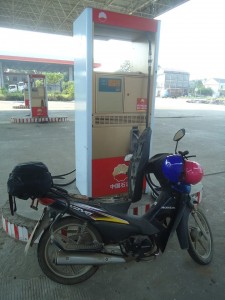
They are workhorses! My son rode one from Wuhan to Changsha over bumpy roads, a ten-hour journey only because he and his girlfriend had to stop so often to give their sore butts a rest. They are certainly not meant for long-distance riding but they are up to the task, if asked. In Wuhan, two other friends left on a Friday night and drove their two Waves through the back roads of China to the Three Gorges Dam and back on a weekend. Non-stop driving for one day there and one day back. No problems. And I just read about a couple that rode their Waves from Thailand to Vietnam.
Any idiot can learn how to ride one of these very quickly. A novice would not feel comfortable hopping on a real motorcycle and going for a spin. Shifting gears takes a lot of practice and riding a motorcycle is a lot different than a bicycle. But every day, all across Asia, you see total beginners jumping on rental Honda Waves and riding off into the horizon. It only takes a quick ride around the parking lot to get the hang of shifting because there is no clutch to deal with. Once you are going fast enough, you kick down the gear pedal. And it really doesn’t matter what gear you are in! You can start in second or third, if you are riding alone. The thing will let you know soon enough if you need to shift. Plus there is a nice digital display of what gear you are in to help you out. You can’t really screw it up by making gear-changing mistakes.
They are easy to get off and on because of the low-floor and the roomy front. You can get on it like a scooter and ride it like a motorcycle. The larger wheel radius is more efficient that the small wheels on a scooter and affords a more comfortable ride along bumpy Asian roads. The light weight makes them very easy to handle or pick up if they are dropped and, coupled with the powerful little engines, gives them a lot of get up and go in tight situations. Although they can reach 100 km/h, they will really start whining by that point! I rarely reached that speed on mine even if I was cruising along a major road.
Finally, they are pretty cheap, relatively speaking. You can pick up a brand new one in most countries for around $1000 or slightly more. Used ones are always available because of the number of expats that buy them and then need to get rid of them when they leave the country. Parts are inexpensive and readily available. Because they are so prolific around Asia, you can always find someone who knows how to repair them.
Is that a Christmas tree or a bike?
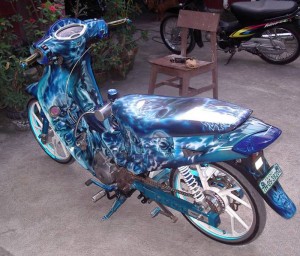 Because there are so many of them around, accessories are everywhere. You can find bling shops by the hundreds with every gadget known to man to decorate your new Honda. Speakers, trunk boxes, flashing colorful lights, decals and a million other gizmos are all available at your corner bike shop. Add to this the flashy custom paint jobs and you have a cult! In some cities, there are entire city blocks devoted to the accessorizing of these scooters. Go out any night in any Asian city and you will see these bikes and their riders congregating everywhere showing off their newest sparkly hardware! Sometimes, it is difficult to see the bikes with all the coloured, flashing LED lights covering every available surface.
Because there are so many of them around, accessories are everywhere. You can find bling shops by the hundreds with every gadget known to man to decorate your new Honda. Speakers, trunk boxes, flashing colorful lights, decals and a million other gizmos are all available at your corner bike shop. Add to this the flashy custom paint jobs and you have a cult! In some cities, there are entire city blocks devoted to the accessorizing of these scooters. Go out any night in any Asian city and you will see these bikes and their riders congregating everywhere showing off their newest sparkly hardware! Sometimes, it is difficult to see the bikes with all the coloured, flashing LED lights covering every available surface.
Maintenance?
Most Honda motorcycles require very little upkeep other then basic maintenance and the Honda Wave is no exception. The rule of thumb is to change the oil every 1000km and have the chain tightened when you hear it rattling. Those are about the only things I ever had to do during my six years of ownership. They will go about 100 km on a tank of gas and a tank of gas is not very much.
Parting thoughts…
You know you have a good thing when others start to copy it! Throughout Asia, other manufacturers have copied the design of the Honda Wave so well that the parts are now interchangeable. Honda has launched suits against some of them, to no avail. But you get what you pay for! Yes, you can purchase a bike for half the cost that looks identical to a Honda Wave, but that’s where the similarity ends. I can’t speak for companies in other countries but those in China could not get it right. The copies looked like a Wave, rode like one, sounded like one, but broke down way more often. The quality of these lookalikes was hit or miss. In general, it was a miss!
After a couple of decades, the Wave is still going strong. They are used daily throughout Asia as a way to move freight and people around the cities and countries. It is pretty hard to go wrong if you decide to buy or rent one when you are in Thailand or any other Asian country.
Happy biking!
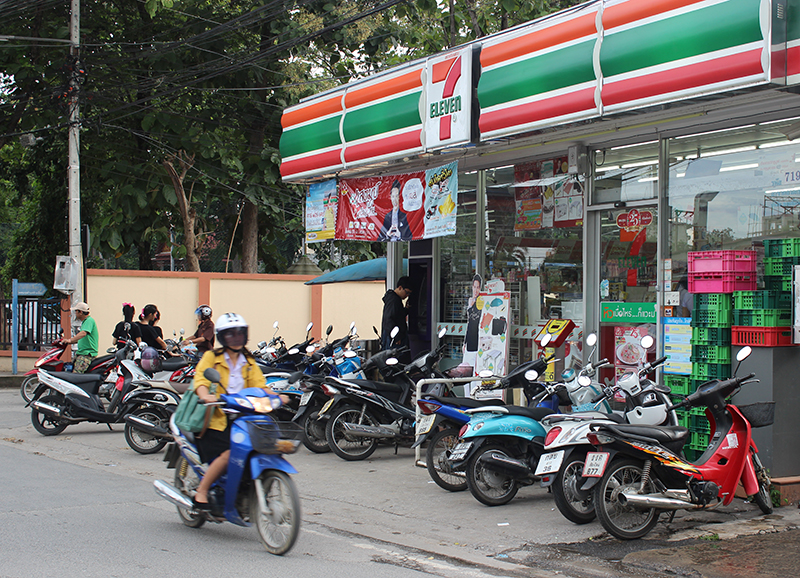
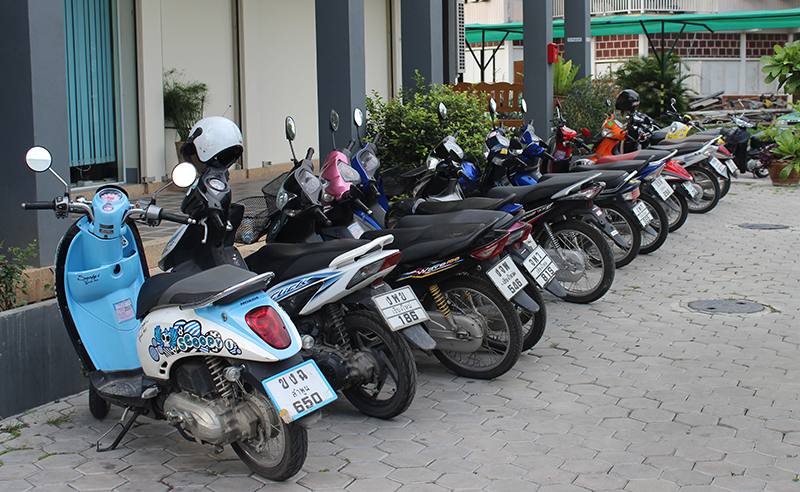
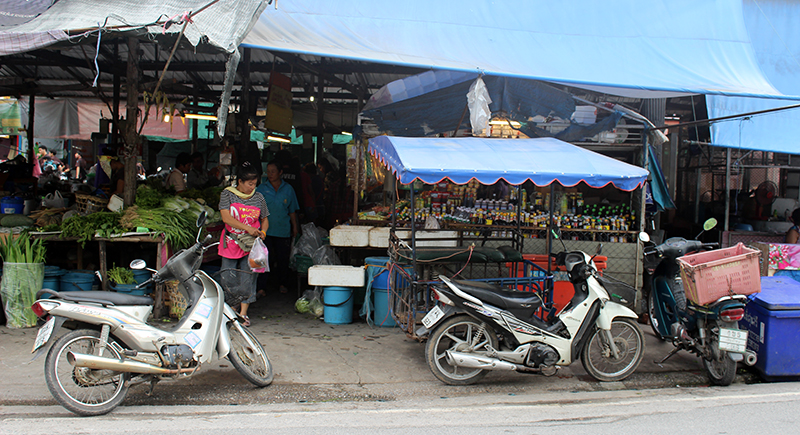

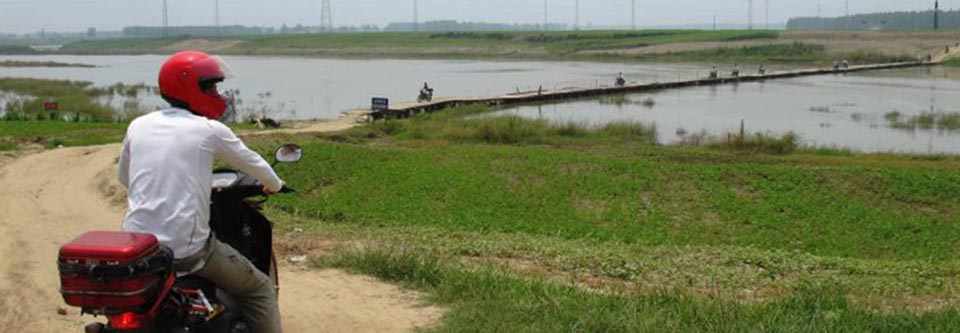
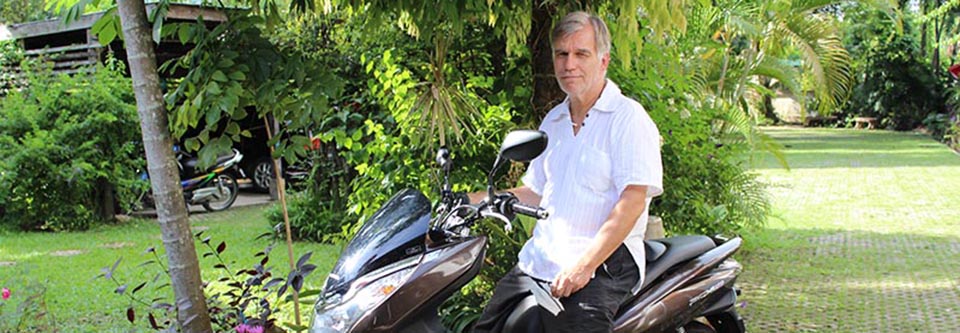
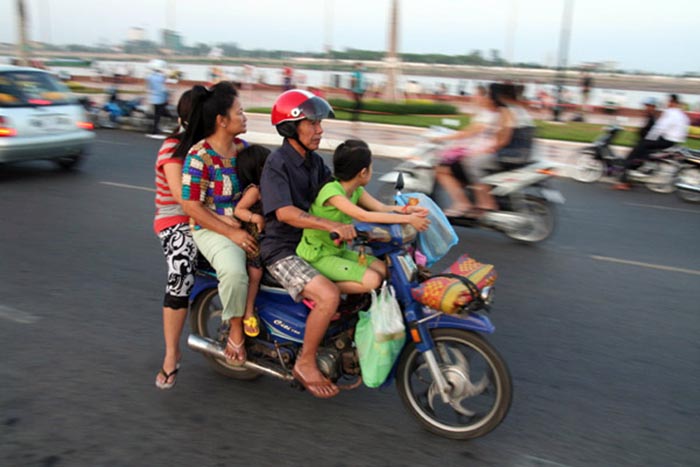
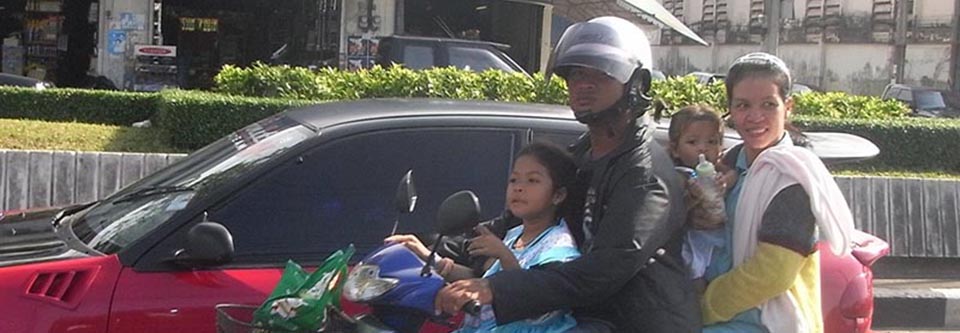
Hey Nancy and Steve, My Mom won a Honda 50 in 1966, (Coca-Cola contest) my first biking experience. Not exactly a Kawasaki 1500, but I think the gas mileage must be better. N/A would be much better off if we could divorce our reliance on the auto and use more scooters and motorbikes. I have been to Chiang Mai. Lovely place and quite enjoyed it, especially the food. Enjoy reading your entries. Ken
Thanks for this post. I am an American and not used to cycles or scooters but I MIGHT try a wave.